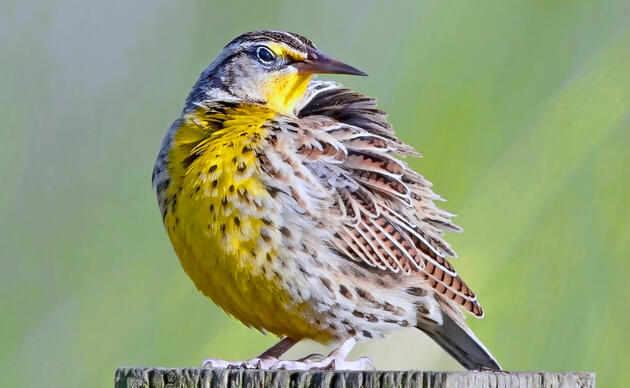Bird migration remains one of the most exhilarating and mysterious phenomena of the natural world. Despite the fact that many species of birds throughout North America complete cross-continental journeys twice a year, we have barely scratched the surface when it comes to understanding the complexities of migration ecology.
Furthermore, migratory birds will spend most of the year away from their breeding areas, emphasizing the need to understand all aspects of a bird’s life cycle to successfully implement more complete conservation strategies.
While the Great Plains is home to a wide variety of important grassland bird species, there are isolated pockets of naturally wooded habitat that host small numbers of migratory wood warblers during both the breeding season and on migration.
The Ovenbird (Seiurus aurocapilla) is one such familiar species that breeds throughout much of eastern North America and overwinters in parts of Mexico, Central America, and the Caribbean.
Starting in the spring of 2023, researchers from Audubon Great Plains and the Nebraska Game and Parks Commission began a project aimed at determining the migratory connectivity of warblers breeding at the edge of their range in atypical landscapes throughout the state of Nebraska. Tracking small birds that travel thousands of kilometers a year can be very challenging, but multiple new technologies are available for even the smallest species to aid research identifying important migratory pathways and wintering locations.
Researchers working with Ovenbirds in Nebraska used light-level geolocators, which are tiny tracking devices that collect sunrise and sunset times over an entire year. But in order to access this data, the same individual bird must be recaptured the following spring in order to recover the positional information stored onboard the devices. This remarkable technology has been used to successfully track multiple other warbler species in North America, including Ovenbirds in different parts of their breeding and wintering range.
In May of 2024, Nebraska researchers were able to recover four of these tracking devices, each containing the movements of different individual birds across the entire year. This data is in the beginning stages of analysis, but early returns indicate that birds breeding in the isolated Ponderosa Pine forests of north-central and northwestern Nebraska migrate to and overwinter in northwestern Mexico. While much of the data still needs to be explored, this is an exciting discovery connecting birds from one small corner of Nebraska to a completely different landscape in the Western Hemisphere. Identifying such hemispheric-scale connections between breeding, migratory and non-breeding locations facilitates conservation action and ecological understanding of migratory bird communities.
More amazing bird migrations and continental connections can be explored in the Audubon Bird Migration Explorer.




